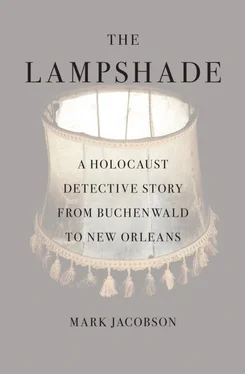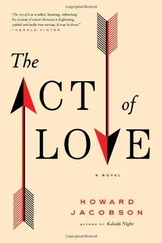This left the mitochondrial, or mtDNA, the feminine ghost in the genetic machine. The DNA in the cell nucleus is the product of equal contributions, twenty-three chromosomes each from the offspring’s mother and father. MtDNA, on the other hand, is descended solely from the female, a matrilineal linkage that has given rise to the often debated concept of “the mitochondrial Eve,” the idea that all humans can trace their origins to a “most recent common ancestor,” conjectured to be a woman who lived 140,000 years ago in East Africa. While that is not an evolutionary scenario to cheer a blut und boden Nazi eugenicist, mtDNA has nonetheless proved a boon to modern-day forensic detectives. It has been especially useful in the search for so-called ancient DNA, since even if the genetic information found in the mitochondria is less varied than the nuclear, it tends to be hardier and more stable.
Certain that the age and condition of the shade precluded much recoverable data, Bever said he hoped to “amplify the mito” in the lampshade sample, thereby enhancing the remaining DNA sequences. One major hurdle would be to eliminate “contaminates.” You didn’t want to pick up genetic material from the various handlers of the shade. Buchenwald, if that was indeed where the thing had come from, was liberated in 1945. It was now 2007. Who knew how many individuals might have touched the lampshade in its prospective journey from the Ettersberg forest to New Orleans? At the time it was impossible to know even how long the lampshade had resided with Dave Dominici before he sold it to Skip Henderson. By the time I came to see Bever, Dominici had already changed his story three times as to how and where he had come upon the lampshade. To get a verifiable reading on the DNA of the “base material” of the shade itself, the “competing profiles” of its handlers would have to be stripped away. The sample would have to be bleached and bleached again. This was a laborious process, Bob Bever said. It would take some time.
Meanwhile, the lampshade, snug in its box, sat quietly in my closet, biding its time.
Having written that cool five-thousand-dollar check to Bode Technology, a true point of no return, I figured there were only three ways it could go:
A) The lampshade could be “fake,” made of Lucius Clay’s unverified “goat skin” or perhaps pig bladder—the bladder of a pig being apparently so similar in molecular structure to human tissue that doctors have used it to reattach severed fingers.
B) Very likely the lab would be unable to make a definite identification. Bob Bever had already said that even if DNA could be retrieved from the sample, it would likely be at the “picogram” level. Asked what a picogram was, Shiya Ribowsky said, “Think of it like this: if the universe is so large as to be beyond imagining, then the picogram might be smaller than we can conceive of.”
Then, there was C) The tests would come back saying the thing was real: made out of human skin. This would change things quite dramatically.
After all, you could look at paintings like Fritz Hirschberger’s pastel nightmare Arts and Crafts in the Third Reich, which shows a demure-looking Ilse Koch seated at an ochre-colored table with Karl Koch, a long-stemmed floor lamp with a pinkish shade bearing the image of an innocent girl in a forest green bonnet. You could read “Lady Lazarus” by Sylvia Plath, surround yourself with the poet’s wrenching sectioning of her soon-to-die body, her right foot “a paperweight,” her face featureless and fine like “Jew linen,” her skin “bright as a Nazi lampshade.”
However, to possess such a thing, to be able to hold it in your hand—a real human skin lampshade —this was an emotional and intellectual bridge not yet crossed. It was news. And, I had to confess, a large part of me wanted it. That was the shock, how much I wanted that object in the closet to have once been part of a walking, talking human being. It wasn’t only me. Nearly everyone I spoke to about the lampshade said, given a choice, they would, with grave reservations of course, rather it be real. It was more than the fact that pig bladders aren’t what you call a good story. Here, even in the age of 9/11, after a century of genocide from Guatemala to East Timor, was an opportunity to grasp the unthinkable.
The phone call came soon enough. You couldn’t say it was a eureka moment because someone as sober as Bob Bever does not have eureka moments, at least none that show. The lab had done the testing several times, all with the same result. It wasn’t much, a level barely above what could be measured definitely, but it was there.
“The report says it’s human,” Bever said evenly.
“You’re sure? No mistake?”
Bever exhibited a sense of irritation. Yes, he said, a mistake was possible, but he was not in the business of making mistakes.
Bever said, “Right now, if I had to stand up in a court of law, as I often do, I would testify that we have found evidence of human origin.”
“Huh.”
The report emailed from Furnace Road arrived in my in-box a few moments later, dated April 20, 2007, which would have been the Führer’s 118th birthday, sixty-two years to the day after Ann Stringer’s story about the Buchenwald lampshade broke. A number of items jumped out. Comparing the mtDNA haplotypes found in the lampshade samples to “standard Cambridge Mitochondrial sequences,” it was ascertained that the “NCBI database… came back with a 0.0 e-value signifying a 100% probability that the cyt b sequence is human.” Two such human profiles were found, one major and one minor. It was the opinion of the lab that the minor profile might be due to the handling of the lampshade, but “the major profile is most likely from the lampshade material itself.” [8] For DNA report from Bode lab, see Appendix.
A few hours later, Bever called again to make sure I had gotten the report. Yeah, I told him. I did.

FOUR

When I called Skip Henderson to tell him about the results of the DNA test, he was driving down North Claiborne Avenue under the I-10 in “the Bus.”
The Bus, a $400,000, forty-five-foot-long converted RV with thirteen Internet-ready computer terminals and a $20,000-plus satellite dish on the roof, was a gift to the City of New Orleans, part of the Bush administration’s scattershot Hurricane Katrina recovery plan. The original idea was to create a mobile center to help the handicapped and those otherwise unable to travel find employment. However, with the ravaged city short of cash and unsure how to properly deploy the extravagant vehicle, the Bus remained parked out at Louis Armstrong Airport for more than a year. When Goodwill Industries arrived at a public-private arrangement with the city to organize new post-Katrina employment services, the Bus became part of the deal. It was supposed to be a two-person unit, staffed by a computer-savvy employment counselor and a driver. However, there was only enough money for one salary, which is how Skip, ace employee of the Louisiana Department of Labor, wound up doing both jobs.
Planning was somewhat free-form. Basically, Skip was given the key and told to park in various parts of the largely deserted city and teach whoever happened to straggle in how to log on to Craigslist and other employment sites. There were difficulties from the start. When Skip went to pick up the RV for the first time, he found all the tires of the eight-ton vehicle completely flat. There was no spare. Skip warned the Goodwill people the satellite dish was going to get stolen, but no one listened. One day parts of the thing slid off, crashing to the pavement. Apparently some thieves, trying to remove it, had loosened the bolts.
Читать дальше













